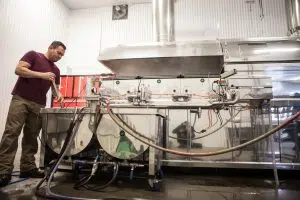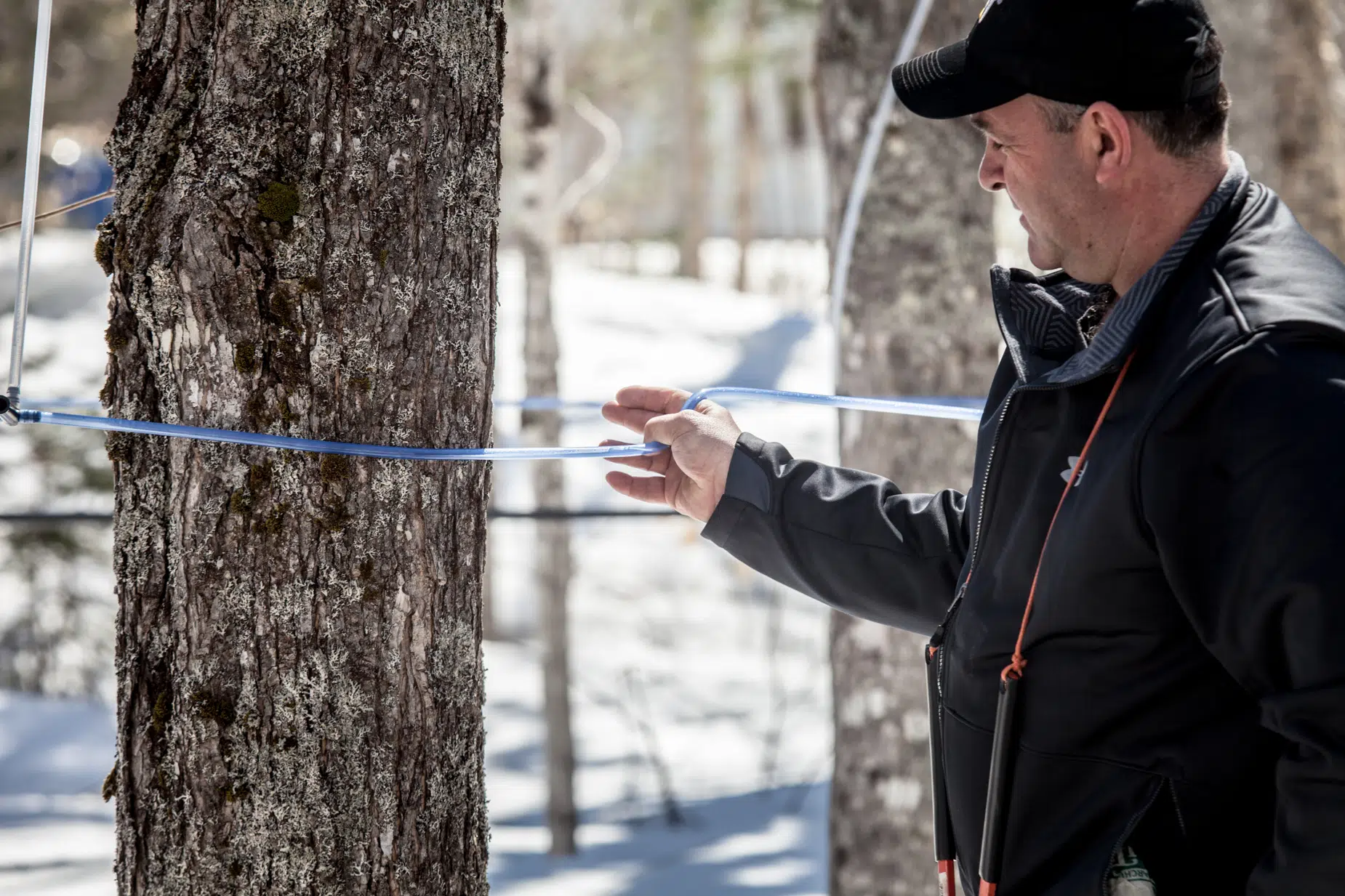The New Brunswick maple syrup industry has grown dramatically in the last 15 years, even registering export growth during the pandemic.
New Brunswick Maple Association Executive Director Louise Poitras says industry sales have increased from $3-million in 2006 to a current estimate of $33-million. Exports grew by 20 percent in the last year alone.
Poitras said the province currently produces and exports 7.5 million pounds of maple syrup per year with 67 percent of the province’s maple syrup going to the United States.
“In 2015, when the government allocated another 4,400 hectares of Crown land to producers, taking it up to roughly 14,500 hectares in the province, it gave a big push to the industry,” she said, adding that a lot of money also went into installing state-of-the-art equipment.

Maple syrup being boiled at maple sugary Image: New Brunswick Maple Association
The association is asking for another 12,000 hectares of Crown land for maple syrup production as part of further growth plans.
The number of maple syrup producers, small and large, in New Brunswick has jumped to 250 with the association growing from 15 to 150 members over the past 15 years.
Poitras credits the increase in maple sugaries – large producers who tap, collect and package maple syrup by the barrel and sell them in bulk – to the industry’s jump in revenues.
“If you want to build an industry, you can’t just make a small number of bottles every year – you can’t grow an industry [that way],” she said.
The brief six-week tree-tapping season has a long-tail economic impact on the province with its production, bolstered using green technology.
“Overall, we hire about 2,500 people, and that’s included part-time and full-time,” she said. “Now syrup is not in buckets, it’s held in tubes. Everything is vacuumed in their station – we can even pinpoint if there’s a leak somewhere with a computer, it’s very high tech.”
Poitras says every syrup in New Brunswick has a unique flavour because each is made differently, whether made in bulk or from a family tradition.
“Some of them boil it longer, some of them use wood, some of them use electricity, or use different evaporators,” she said.
The province’s producers also do not mix their syrups together, which would dilute the authenticity of the syrup, in contrast to the Federation of Quebec Maple Syrup Producers.
Next to Quebec, New Brunswick is the second-largest producer of maple syrup in Canada and the fourth-largest producer in the world, with 70 per cent of its syrup produced up north.
The New Brunswick Maple Association launched Mapleicious NB, a festival celebrating and promoting the province’s maple industry, in 2017, building off the popularity of maple shacks where people can buy and consume transformed maple products, from candy to breakfasts.

Mapleicious Festical maple candy Image: New Brunswick Maple Association
“They’ve grown in popularity, and it is a tradition that we want to continue here in New Brunswick,” she said. In a normal year, the maple shack Sucrerie de Chaisson serves over 13,000 maple syrup breakfasts during the maple season.
The festival is held every year from mid-March to the end of April.
Poitras and the association partnered with Agriculture New Brunswick and Tourism New Brunswick to launch Mapleicious NB, with restaurants across the province participating with maple syrup dishes and creating maple trails and education about the industry.
The festival continued to innovate during Covid-19 by investing in social media, recruiting maple syrup influencers who highlighted maple festivities, producers and recipes on their platforms.
“We have great support from our community buying from their local producer – when the buzzword became ‘local,’ we thought, ‘well, we’re local, let’s leverage on that,’” she said. “So we started talking about local, buying local, buying your local maple syrup – the more you’re asking for it, the more it’s going to come into your store.”
This story was originally published on Huddle.Today – an Acadia Broadcasting Limited content partner.




